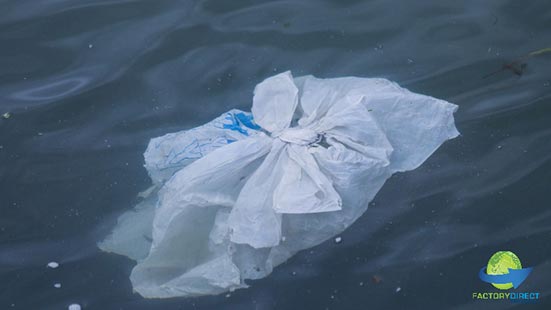How Eco-Friendly Are Fabric Shopping Bags in Comparison to Plastic Bags?

Understanding the Benefit of Going Reusable
One of our readers reached out and wanted to learn more about reusable shopping bags. Specifically, just how eco-friendly are fabric shopping bags when compared to plastic bags. A wide variety of fabrics can be used to create reusable shopping bags. However, whether the fabric is recycled or sustainable it will still be more eco-friendly than plastic bags. If you’ve wondered just how eco-friendly are fabric shopping bags are in comparison to plastic bags then we have your answer.
The Problems with Plastic Bags
Plastic bags are made from nonrenewable resources – namely natural gas and petroleum. Utilizing nonrenewable resources isn’t a bad thing. The problem with tying up nonrenewable resources in plastic bag production is that those resources are then lost to the manufacturing industry. Plastic bags are recyclable, however, plastic bags are seldom recycled.
Low Recycling Rates
It’s tricky to determine what percentage of plastic bags are recycled. For sorting purposes, plastic bags are categorized with thin plastic wrap and packaging. Only about 9% of the plastic produced in this category of bags, wrap, and packaging is recycled.
So in the best-case scenario, 9% of plastic bags are recycled, but this number is likely lower since that 9% accounts for several different varieties of plastic products. If plastic bags were consistently recycled that would classify them as eco-friendly, but that just isn’t the case.
Landfilling Plastic
Plastic bags are much more likely to end up in a landfill or as litter. In landfills, plastic bags contribute to the landfill reaching capacity. This may seem silly because plastic bags are so small and thin so how much could they really contribute to landfills reaching capacity.
Estimates indicate about 100 billion plastic bags are used in the U.S. each year. Not all of those 100 billion plastic bags are destined for landfills, but a lot are and that can add up to a lot of plastic just taking up space.
Instances of Litter
The final possibility for plastic bags is to be discarded as litter. Litter can end up anywhere, but about 8 million metric tons of plastic litter go into the world’s oceans every year. Aside from being an eyesore, plastic bag litter can be a major threat to animals and their habitats. Animals may become stuck or tangled in plastic bags and be unable to defend or fend for themselves. Animals can also ingest plastic which can be fatal and has consequences on the food chain.
The Benefits of Fabric Reusable Bags
Fabric shopping bags are designed to be reusable. One fabric bag can replace thousands of single-use plastic bags, which means less trash and litter are generated. Less plastic trash and litter mean there are fewer negative consequences.
Different types of fabric can be used to create shopping bags, such as recycled or sustainable materials.
Types of Fabric Shopping Bags
Recycled fabric, like woven polypropylene, non-woven polypropylene, and RPET are made from recycled plastic. These fabrics give new use to existing materials and they can be recycled when they have fulfilled their usefulness.
Sustainable fabric is made from plant-based textiles. Examples of sustainable fabrics used for reusable shopping bags include cotton, jute, and even bamboo. Sustainable fabrics can typically be recycled when they have fulfilled their usefulness, but the natural fibers are also biodegradable.
Put Fabric Shopping Bags to Work for Your Business
Fabric shopping bags are eco-friendly because they eliminate the need and use of single-use plastic bags which in turn reduces the negative environmental impact of plastic bags. Fabric bags are also made from environmentally friendly materials and can be responsibly disposed of when the time comes.
If you want to create your own reusable fabric shopping bags then get in touch. We have been helping customers create reusable bags customized to their exact specifications for over 10 years. We have streamlined the process to save you time and money.
Get started right now and create your own bag!
Tagged




